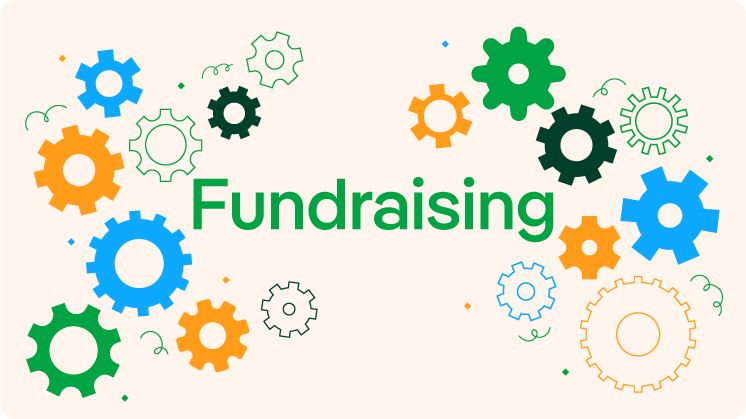Understanding the Important Parts of Nonprofit Fundraising: Key Practices for Enhancing Economic Sustainability
Not-for-profit fundraising is a diverse venture that needs a nuanced understanding of several vital elements to make certain financial sustainability (nonprofit agency). From calculated planning that lines up with mission-driven objectives to the cultivation of purposeful benefactor partnerships, each element plays a vital function in the general success of fundraising initiatives. In addition, the combination of effective communication and neighborhood engagement strategies boosts outreach and impact. However, the adoption of technology offers both possibilities and obstacles that can significantly influence fundraising outcomes. What particular practices can companies carry out to navigate these intricacies and safeguard their monetary future?
Strategic Fundraising Preparation
Strategic fundraising planning is an important element for any type of nonprofit organization intending to achieve its goal successfully. This process includes setting clear, quantifiable goals that line up with the organization's general objectives while considering the one-of-a-kind requirements of the neighborhood it serves. A well-structured fundraising strategy not only determines potential income sources but likewise describes the methods and methods needed to involve those resources.

Moreover, leveraging data analytics can notify decision-making by supplying understandings right into donor habits and patterns, enabling nonprofits to tailor their fundraising approaches appropriately. Regular evaluations and updates of the fundraising plan are vital to react to transforming conditions and arising possibilities. Ultimately, an extensive tactical fundraising strategy works as a roadmap for nonprofits, fostering financial security and allowing them to satisfy their mission successfully.
Structure Donor Relationships
Building strong donor relationships is vital for the long-lasting sustainability of any type of nonprofit organization. These connections are the structure upon which successful fundraising efforts are developed, as they promote depend on, commitment, and engagement amongst advocates. Nonprofits have to focus on growing purposeful links with their contributors, acknowledging that each interaction can substantially affect their desire to add.
To properly construct contributor partnerships, companies need to focus on individualized engagement approaches. This includes understanding the interests, motivations, and offering patterns of private contributors, enabling tailored communication that reverberates with them. Normal updates on organizational development, program results, and the impact of contributions reinforce the value of their support.
Furthermore, expressing gratefulness is important. Acknowledging contributions without delay and sincerely not only enhances partnerships however additionally urges ongoing assistance. Occasions such as donor admiration events offer opportunities for individual links and neighborhood building.
Ultimately, nurturing benefactor relationships goes beyond transactional communications; it personifies a partnership where donors feel valued and important to the goal. By spending time and sources in relationship-building, nonprofits can boost contributor retention, increase life time offering, and make certain economic security for their efforts.
Reliable Interaction Approaches
Effective interaction strategies play a crucial duty in strengthening the solid donor connections that nonprofits make every effort to cultivate. Constant and clear messaging is vital for conveying the objective, vision, and influence of the organization. Verbalizing the one-of-a-kind value recommendation aids contributors recognize how their contributions make a tangible difference.
Utilizing multiple interaction channels-- such as e-mails, social networks, e-newsletters, and in-person events-- makes sure that messages reach a diverse audience - nonprofit agency. Customizing communication to various benefactor segments can improve involvement; for instance, significant donors may appreciate comprehensive records on funding allocations, while smaller sized donors might like succinct updates highlighting crucial achievements
Storytelling is one more powerful tool in nonprofit communication. Sharing compelling stories about beneficiaries can stimulate emotional feedbacks and cultivate a much deeper link with the cause. Openness about financials and program results constructs trust fund, encouraging donors to remain engaged over time.
Involving the Area
Area involvement is important for nonprofits looking for to magnify their impact and foster a feeling of possession amongst regional stakeholders. Developing a durable connection with the neighborhood not only boosts visibility but also builds trust, vital for sustainable fundraising initiatives. By proactively involving area participants in decision-making processes, nonprofits can align their objectives with the needs and desires of the population they offer.
To successfully engage the area, nonprofits ought to focus on openness and open interaction. Hosting public forums, workshops, and informative sessions enables purposeful discussion, where stakeholders can articulate their point of views and add to the company's vision. In addition, working together with neighborhood services, colleges, and civic organizations can produce synergistic partnerships that leverage shared sources for higher influence.
Another important element of neighborhood involvement is acknowledging and celebrating regional contributions. Acknowledging contributors, volunteers, and supporters fosters a sense of belonging and commitment, urging continued involvement. In addition, showcasing success tales and the concrete advantages of community assistance can influence others to contribute.
Ultimately, positive community interaction grows a network of advocates that are bought nonprofit marketing the not-for-profit's mission, making sure enduring support and enhanced economic sustainability.
Making Use Of Innovation and Tools

One vital tool for nonprofits is a comprehensive contributor administration system. These platforms make it possible for companies to preserve comprehensive records of contributor communications, preferences, and payments, helping with personalized interaction and involvement (nonprofit agency). Additionally, utilizing on-line fundraising platforms allows nonprofits to get to a broader target market, making it less complicated for advocates to contribute with various channels, consisting of social media and e-mail projects
In addition, using project monitoring devices can assist improve internal processes, making certain that fundraising teams continue to be arranged and concentrated on their objectives. Automation software application can likewise simplify repetitive jobs, such as sending out thank-you emails or suggestions, releasing up staff time for even more strategic campaigns.
Conclusion
Finally, the vital components of not-for-profit fundraising incorporate tactical planning, strong contributor relationships, efficient interaction, community interaction, and the application of modern technology. These elements jointly add to enhancing financial sustainability and strength within not-for-profit organizations. By carrying out best methods in these areas, nonprofits can much better align their goals with their mission, thus optimizing their influence and making certain lasting stability in an affordable philanthropic landscape. A comprehensive technique is vital for promoting long-lasting assistance and functional effectiveness.
Additionally, leveraging data analytics can educate decision-making by giving understandings into donor habits and fads, allowing nonprofits to tailor their fundraising methods accordingly.Structure solid benefactor relationships is vital for the lasting sustainability of any type of nonprofit company.Efficient communication techniques play an essential duty in enhancing the solid contributor partnerships that nonprofits aim to grow.One vital tool for nonprofits is a thorough donor administration system.In conclusion, the essential components of not-for-profit fundraising include calculated preparation, strong contributor connections, efficient interaction, community involvement, and the usage of modern technology.